We didn’t go to farmers’ markets often when I was a kid. When we did, my dad always purchased a fennel bulb with the huge spray of feathery leaves that make it so attractive. I think he liked how it looked sticking out of the bag he carried.
He would rip off a few leaves, and chew the “finocchio” with gusto — often trying to share it with strangers as we walked back to the truck. Most would decline politely (and probably confused) by the random offer of a smiling, licorice-smelling Italian stranger with his teenage daughter blushing red with embarrassment.

He meant well though, because there is no flavor like a fresh fennel plant, and it’s an experience that many people are sadly lacking outside of an overpriced dish at some high-society eatery. Delicious both cooked and raw, this rather undersown bulb is sometimes a little tricky to grow satisfactorily. But if you plant it in the right conditions, you’ll be rewarded with quite the culinary delight.
Florence Fennel Or Sweet Fennel?
There are two types of fennel plants that you’ll find in seed catalogs. Florence fennel, commonly called by its Italian finocchio, and sweet fennel. Both share an anise-like, naturally sweet flavor and have similar growing needs with the distinct difference that Florence fennel will form a delicious bulb under ideal circumstances, and sweet fennel will not.
Related Post: The Anise Plant
Sweet fennel plant is the older of the two, and even now is barely domesticated –California residents are undoubtedly familiar with the invasive nature of wild fennel. A wild profusion of the non-native plant is prevalent along the coastline. Probably because the climate is similar to fennel’s Mediterranean homeland. The herb has been used for thousands of years as food, drink, and medicine.
Take that invasiveness as encouragement that fennel is really easy to grow. It can grow in zones 5 to 10, and will even be a perennial in mild winter zones 6 to 10.
How To Grow Fennel
The fennel plant isn’t picky, but for the best results, give it a good start. Fertile, well-draining soil in full sunlight is the gold standard for most garden plants, and fennel is no exception. Seeds sprout readily when planted after the last spring frost; keep in mind this plant will be rather large when mature. I space my fennel seeds a foot apart, and then eat the thinnings as the plants grow larger.

Remember, fennel came from the Mediterranean, so it can tolerate some dry weather. Also, since it does well as an invasive weed, you really don’t need to baby it. Just make sure the soil around it stays a little moist — not wet — and it should thrive.
For a continuous harvest, successively sow fennel through late spring, then start up again around late summer. The fennel plant is frost-susceptible even though it can be perennial in warmer climates, so chilly weather will probably mean the end of your aromatic endeavors until next spring.
Potential Fennel Problems
As a member of the carrot family, the fennel plant is often host to the parsley worm. While this may sound like a dire situation, there is one circumstance where it’s a good thing! The attractively-striped caterpillar will become a beautiful black swallowtail butterfly for the small price of a few fennel fronds, so leave them alone and plant a few extra seeds and everyone is happy.
The fennel plant is actually quite trouble-free. In fact, the biggest trouble you may face in your garden is the fennel itself. Left to themselves, these plants grow huge — sometimes around 5 feet tall — and dominate wherever they’re sprouting with masses of feathery foliage.

And while the flavor of those floofy fronds is delicious to humans, other residents of the garden don’t feel so friendly toward their Italian neighbors. Fennel discourages the growth of other plants, especially peppers. Like walnut trees and several other invasive plants, fennel is allelopathic which means it releases chemicals into the soil that kills or limits the growth of any and all competition.
Related Post: How To Get Rid Of Aphids
I think of the poor, friendless fennel plant as a lone wolf in the garden so give it a place by itself where it can grow tall, feed pollinators, and not inhibit the rest of your harvest. My favorite plan for fennel is to give it its own growing space right near the entrance of a house. The strong smell is pleasant for people but deters pests. The dried leaves are also a flea deterrent so throw a handful of fennel in the kennel (easy to remember) for happier dogs.
Additionally, don’t plant fennel near dill. Though they’ll tolerate each other’s presence well enough, they’re close enough relatives to cross-pollinate and make saving seed for next year an issue.
Harvesting The Fennel Plant
Sweet fennel can be harvested at pretty much any stage of growth. The stems, leaves, flowers, pollen, and seeds are all edible and delicious. It is recommended to harvest no more than one third of the plant at a time to keep it from being damaged.
Florence fennel bulbs are prime for cutting from the root once they are around 3 inches across and nicely plump. Usually, this is around 90-115 days after being sown. Be sure to keep them decently watered to keep the plant from being stressed and bolting instead of making bulbs.

For milder-tasting bulbs that are the attractive pale white and green featured in store-bought fennel, blanch them once they are the size of a chicken egg. Mound mulch around the bulb at that point and you should end up with a slightly sweeter, more tender harvest. Make sure you don’t waste the stems and leaves, though. They’re just as useful as the rest of the plant (as you’ll read below), and it would be a shame to simply send them to the compost.
Related Post: How To Dry Herbs From Your Garden
The fennel plant is a biennial, so if you live in milder weather, you probably won’t see flowers and seeds until the second year. If the plant becomes stressed, however, or if it was sown in the early spring, you may end up with a bolted plant the first year and get some seeds after all.
How To Use Fennel
Thomas Jefferson was positively crazy about this vegetable, declaring “it is beyond every other vegetable, delicious … indeed, I preferred it to every other vegetable, or to any fruit.” Somehow, his fervor never spread, resulting in fennel’s continuing, relative obscurity in the New World. Don’t let unfamiliarity discourage you, however. If you have the space for the fronds of friendless fennel, you may find that it is both fun to eat and experiment within recipes.
The flavor profile is intensely aromatic and reminiscent of licorice and anise, but with a sweetness. To me it is a distinctly Italian experience, pairing well with citrus, fish, or spiced meat like sausage, but if you didn’t grow up with it, the flavor may have a bit of a learning curve. It is most strongly flavored when raw, so if you find it too much, just cook it to mellow.
As the plant begins its feathery spread, you can pluck the dill-like branches and either chew them raw for instant fresh breath or steep them in a comforting tea that is excellent both hot and cold. One of my favorite summertime brews is sun tea with a handful of fennel leaves, lemon balm, and mint — naturally sweet, and so refreshing!

When you harvest the tasty bulb of Florence fennel, cut it so a bit of the base and the roots are left in the ground. The second flush of stems and leaves will extend the flavorful harvest. Sweet fennel stalks, with their hollow centers, make for innovative and flavorful “straws” for use in summery drinks.
The bulb is delicious raw in salads or caramelized in the oven. The celery-like stalks can be candied while tender before the plant bolts in summer’s heat. Even if you find the stalks too tough later in the season, they can still be simmered in a flavorful stock with other vegetables, or cooked alongside fish.
Related Post: The Many Varieties Of Mint
When the dill-like flowers emerge, enjoy the visiting butterflies, and collect fennel pollen if you so desire. A sprinkle of this currently trendy ingredient on a finished dish may make your kitchen feel like it deserves a Michelin star, but no one will have to pay the associated price tag.
When the seeds form at the end of the umbel, collect some for next year’s planting and then use the rest as sausage spice, a warming ingredient to masala chai, a stand-alone tea to soothe an over-indulged stomach, or chewed straight for a naturally fresh mouth. The fennel plant will readily self-sow (some say TOO readily) so be proactive in catching those seed heads if you don’t want a permanent fennel patch.
Do any of you grow your own fennel plant and share Thomas Jefferson’s love of it? What’s your favorite way to use it? Let me know in the comments below!








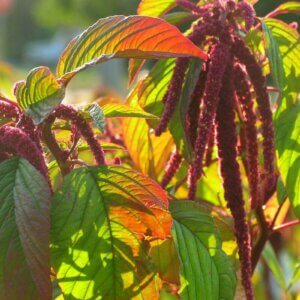
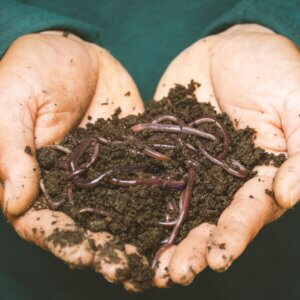











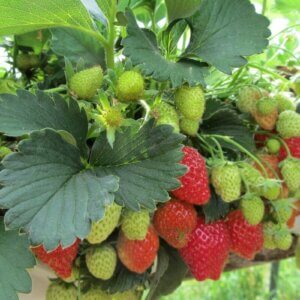

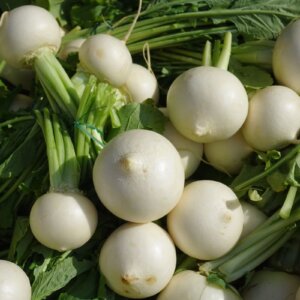

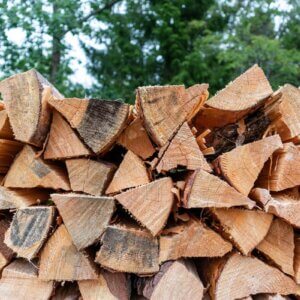
















Excelente por donde miremos .Excelente la manera de dar a conocer las bondades de esta planta.Excelente todo .Su cultivo .usos,propiedades.La introduccion fantastica ,casi una fotografia.GRACIAS .
¡Qué lindo comentario, Dionel! Estoy muy alegre de que el artículo pueda ser útil para usted.
GRACIAS, lo lei completo pues empezare con un huerto y quiero tener HINOJO , nosotros consumimos hinojo, es muy rico y AMO mis ensaladas con papa de hinojo , y acompañando unos ” deliciosos rellenos Árabes” . Apenas llegan a las verdulerias, compro mis hinojos y elijo lo mejor, y el mas felíz es mi esposo y también mis hijos, gracias me encanta toda la información valiosa que envías, desde CONCEPCION, CHILE una fiel admiradora, saludos cariñosos y bendiciones…soy Gabriela hasta pronto…te contare mas adelante que tal sale mi proyecto, soy VEGETARIANA…amo las verduras , frutas , frutos secos, legumbres…obvio las flores y la NATURALEZA…
¡Fantástica, Gabriela! Gracias por un comentario tan entusiasta. Me encanta que tus hijos disfruten las verduras así. Hinojo es sabrosa en una ensalada– una excelente manera de prepararla.
¡Estaría feliz de escuchar actualizaciones sobre su jardín! Amo los verduras y frutas también. 🙂